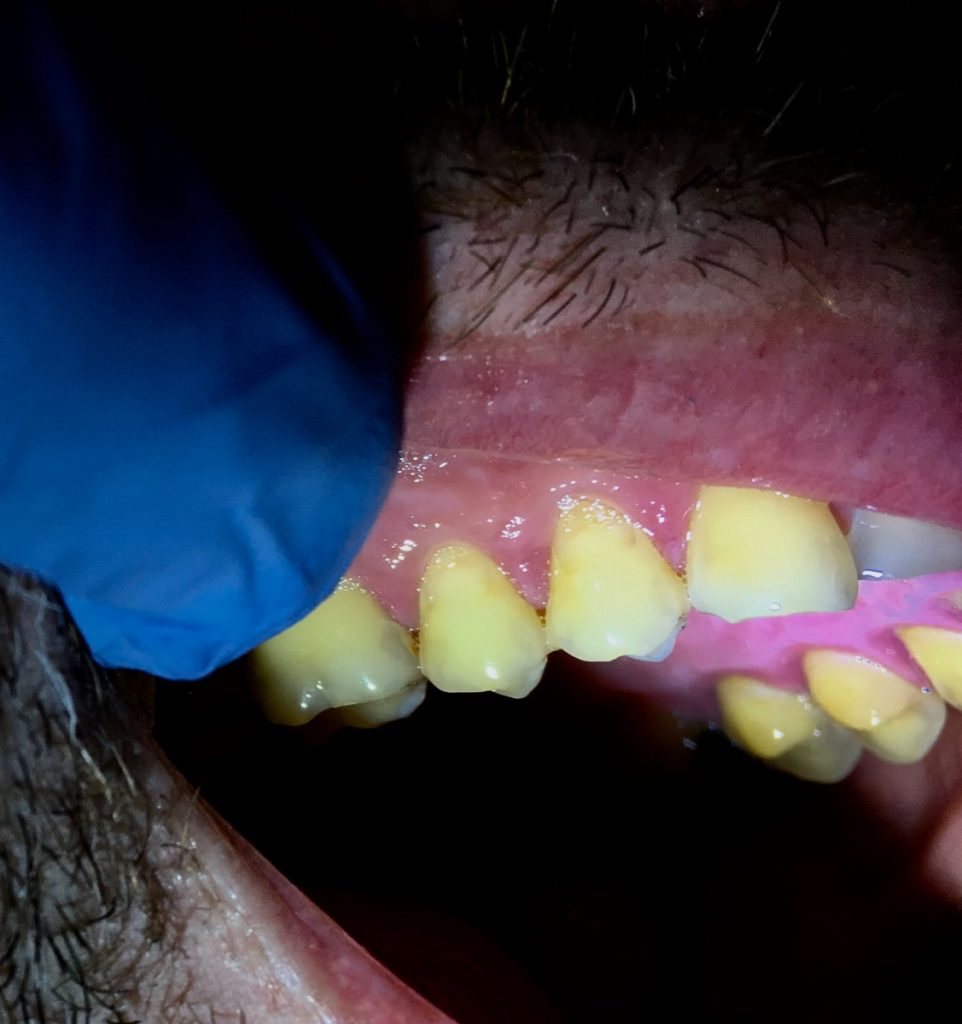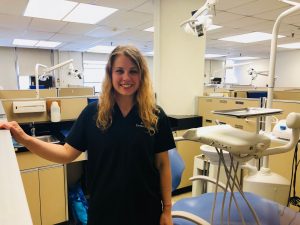G.P., 49 years old, Caucasian male. Heavy calculus case value/Type III Perio.
Patient is a smoker and smokes 1 pack per day for 25 years, which makes him an ASA 2 patient. He presented beginning stages of nicotine stomatitis. The patient had been interested in quitting and was given a smoking cessation form about the effects of long-term smoking such as increased chances of gum disease, tooth staining, tooth loss, heart disease, and cancers. The patient self-prescribes OTC Advil PM (NSAID) when necessary to help with his insomnia.
Patient presented with a class I occlusion, a bilateral 4mm overjet and a bilateral 50% overbite. Attrition was visible on maxillary and mandibular anterior teeth #6-11 and #20-27. Two-millimeter abrasions were found on the facial of #5, 6, 8, and 11 due to bruxism. Patient presented with generalized moderate gingival inflammation, red margins and flat, spongy, blunted papilla. Periodontal findings for this patient were generalized 5-7mm pocket depths, moderate bleeding upon probing and recession present. Generalized stable moderate Periodontitis (type III) was gathered from the assessments completed, but could only be confirmed after radiographs revealed bone loss.
Patient has erosive tooth wear affecting the maxillary teeth and is more prominent on the maxillary right pre-molars. After speaking to the patient about his diet, sleeping patterns and snoring, it was suspected that the erosion may be related to possible sleep apnea. The patient also stated that he sleeps on his right side, which would indicate why the erosion is mainly on the maxillary right. A referral was given to the patient to see a physician for erosion that may possibly be related to a form of sleep apnea.
The nature of the patient’s job as an electrician provides him with a higher chance of traumatizing his body and oral cavity. In addition, his inability to sleep properly may be causing his erosive tooth wear. I discussed with the patient the possible risk factors for the erosion and recommended a daily Fluoride rinse and toothpaste such as Sensodyne ProNamel to help strengthen and protect his enamel. Although the patient stated that he does not eat or drink acidic, I discussed the effects of these highly acidic foods and drinks. These are all risk factors that can contribute to an unhealthy oral cavity if the right protective factors are not utilized.
This particular case helped me realize that everything is connected to the oral cavity and that if we pay close attention and ask the right questions, we can certainly find out a lot about a patient and their habits. In turn, it is crucial to educate the patient upon our findings, so that they may be empowered to protect their oral health.






